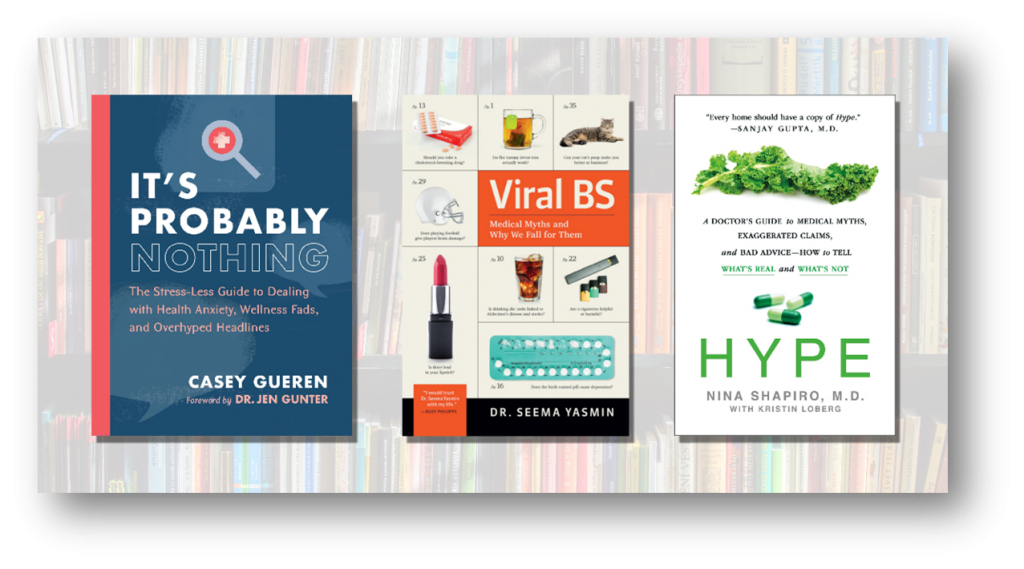Jan
05

Posted by Michele Spatz on January 5th, 2022
Posted in: Health Literacy, Health Misinformation, News from NNLM, News from NNLM Region 5
Tags: consumer health, health information, health literacy, NNLM Reading Club, public health, public library
Health misinformation is a serious threat to public health. It can cause confusion, sow mistrust, harm people’s health, and undermine public health efforts. Limiting the spread of health misinformation is a moral and civic imperative that will require a whole-of-society effort. ~ Vivek H. Murthy, M.D., M.B.A., Vice Admiral, U.S. Public Health Service, Surgeon General of the United States
Health misinformation always has an audience – from snake oil salesmen of ages past to savvy social media health “experts” and “fake news” reports of the present. The pandemic leaves people vulnerable and uncertain. As sophisticated misinformation peddlers take advantage of our 24/7 communications torrent, they make it even harder for people to discern health information fact from fiction.
Critically evaluating health information is a crucial skill in today’s media-driven society. So is understanding the tactics that new-age charlatans use to dupe well-meaning individuals. This month, the NNLM Reading Club suggests three books to help uncover health misinformation – the strategies used to make it believable and the critical thinking skills needed to discover its real character.

It’s Probably Nothing by Casey Gueren l Viral BS by Seema Jasmin l Hype by Nina Shapiro
In It’s Probably Nothing: The Stress-Less Guide to Dealing with Health Anxiety, Wellness Fads, and Overhyped Headlines, experienced health writer and editor Casey Gueren shares tips to build one’s health literacy — like learning to flex your BS detector when searching online. Her tone is bright and cheery – a “you got this” approach to becoming smarter health readers.
Director of the Stanford Health Communication Initiative, Emmy-Award winning writer Seema Jasmin, M.D., addresses viral medical myths and why they are so tenacious in her book Viral BS: Medical Myths and Why We Fall for Them. Dr. Yasmin shares the science refuting 46 falsehoods and talks about why such persistent health untruths persist.
Hype: A Doctor’s Guide to Medical Myths, Exaggerated Claims and Bad Advice was written by Nina Shapiro, M.D., & collaborator Kristin Loberg. In addition to her clinical practice at UCLA’s Mattel Children’s Hospital, Dr. Shapiro is a noted health writer and commentator. She wrote Hype to “wake [people] up to the truth about popular health advice and offer a thoughtful, reliable guide for becoming a smart health consumer and patient.”
We encourage you to learn how to spot health misinformation by reading one of these books and discussing it in your book club. Visit NNLM Reading. Club: Health Misinformation to get started.